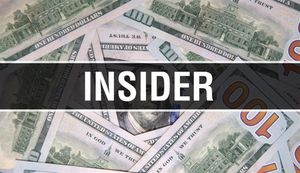
Washington D.C. – September 26, 2025 – The latest US Personal Consumption Expenditures (PCE) inflation data for August 2025, released today, has sent a nuanced signal across global financial markets. While headline inflation ticked up, core PCE, the Federal Reserve's preferred gauge, remained stubbornly elevated but largely in line with expectations. This outcome has solidified investor confidence in the Fed's anticipated interest rate reductions, even as it underscores the persistent challenge of bringing inflation back to its 2% target.
The report's immediate implication is a reinforcement of market expectations for a 25-basis-point policy rate cut by the Federal Reserve in October, with the CME FedWatch Tool now showing a high probability. Despite the positive "risk-on" sentiment in equity markets, the continued stickiness of core inflation above the Fed's target suggests a delicate balancing act for policymakers, who must weigh supporting a weakening labor market against the backdrop of entrenched price pressures.
Detailed Coverage: August 2025 PCE Data Unpacked
The U.S. Bureau of Economic Analysis (BEA) delivered its monthly Personal Income and Outlays report on September 26, 2025, revealing critical insights into the nation's inflation landscape for August. The headline PCE Price Index registered a 0.3% month-over-month increase, translating to a 2.7% year-over-year rise. This slight acceleration from July's 2.6% annual figure marks the highest annual rate since February 2025. More critically for the Federal Reserve, the core PCE price index, which strips out volatile food and energy costs, held steady at 0.2% month-over-month and maintained a 2.9% year-over-year rate, consistent with economists' forecasts and unchanged from July.
Consumer spending demonstrated robust resilience, climbing by 0.6% in August, surpassing July's 0.5% increase, while personal income also saw a healthy 0.4% uptick. These figures paint a picture of continued economic activity, albeit with inflationary undertones. Prices for goods rose by 0.9% year-over-year, accelerating from previous months, and services prices climbed 3.6% year-over-year, slightly higher than July's reading. The personal saving rate, however, saw a modest dip to 4.6% from 4.8%.
The journey to this data release began throughout August 2025, as the BEA meticulously collected vast amounts of data on consumption and prices. By early September, analysts and economists were formulating their projections, setting the stage for market anticipation. On the morning of September 26, 2025, at 8:30 AM ET, the official report was disseminated, immediately sparking reactions across financial exchanges. Key players in this ongoing economic narrative include the BEA, the Federal Reserve (whose monetary policy is directly shaped by this data), a host of economists and market strategists interpreting the figures, and millions of investors and traders adjusting their portfolios.
Initial market reactions were generally positive, with US stock index futures moving higher, signaling a "risk-on" environment as the data largely met expectations rather than presenting an alarming surge. The Dow Jones Industrial Average and S&P 500 were poised for gains. The US Dollar Index remained largely stable, while Treasury yields showed little significant change, reflecting that long-term inflation expectations were not dramatically altered. Gold prices, however, saw a surge, consolidating around $3,780, as investors continued to seek safe-haven assets amidst dovish signals and broader geopolitical uncertainties. The consensus among analysts was that the in-line report provided the Fed with room to continue its easing cycle, reinforcing expectations for further rate cuts in the coming months.
Corporate Crossroads: Winners and Losers in a Rate-Cutting Environment
The August 2025 PCE data, by reinforcing expectations for Federal Reserve rate cuts, is poised to create distinct winners and losers across various sectors of the public market. The prevailing sentiment is that lower interest rates generally stimulate economic activity, reduce borrowing costs, and can boost valuations, especially for growth-oriented companies.
Potential Winners:
The Technology Sector, particularly growth stocks, stands to benefit significantly. Companies like Broadcom (NASDAQ: AVGO), a semiconductor and software solutions giant, could see increased demand as lower rates encourage clients to boost capital expenditures on AI infrastructure. Cloud and AI services providers such as DigitalOcean (NYSE: DOCN) may experience a surge in demand from small and medium-sized businesses, which are particularly sensitive to borrowing costs. Fintech innovators like Block (NYSE: SQ) could see a boost from stimulated consumer spending and improved margins on lending products.
The Consumer Discretionary Sector is also a strong contender for gains. Lower inflation and reduced borrowing costs typically translate to increased consumer purchasing power and confidence, leading to higher spending on non-essential goods and services. Auto manufacturers such as Ford Motor (NYSE: F) would benefit from reduced debt servicing costs and increased demand for auto loans. Retailers and hospitality companies are also likely to see an uptick in sales and bookings.
Real Estate and Homebuilders are directly impacted by interest rates. Companies like PulteGroup (NYSE: PHM), D.R. Horton (NYSE: DHI), and Lennar (NYSE: LEN) could witness a surge in demand as lower mortgage rates improve housing affordability. Suppliers of construction equipment like Builders FirstSource (NYSE: BLDR) would also see increased activity. Real estate marketplaces like Zillow Group (NASDAQ: Z) would thrive on higher transaction volumes.
Industrials and Utilities also stand to gain. Capital-intensive industrial projects become more viable with cheaper financing, benefiting companies like Caterpillar (NYSE: CAT). Utilities such as NextEra Energy (NYSE: NEE), with substantial infrastructure investments, would see reduced financing costs, supporting profitability and stable dividends. Furthermore, Small-Cap Stocks and highly leveraged companies like AT&T (NYSE: T) and Thryv Holdings (NASDAQ: THRY) would see direct improvements to their bottom lines as interest expenses decline.
Potential Losers (or Underperformers):
The Financials Sector, especially traditional banks, may face headwinds. While lower rates can stimulate lending, they often compress Net Interest Margins (NIM) as the interest banks earn on loans may fall faster than the interest they pay on deposits. This could impact the profitability of major commercial banks.
Energy and Materials Sectors often thrive during periods of high inflation due to rising commodity prices. If the PCE data signals cooling inflation, even if gradual, it could imply moderating commodity prices, potentially impacting the revenues and profitability of oil and gas producers, mining companies, and basic chemical producers.
Lastly, Consumer Staples companies, while defensive, tend to underperform relative to consumer discretionary stocks in a "soft landing" scenario driven by rate cuts. As consumers shift spending towards discretionary items, the growth prospects for staples might be comparatively muted.
Beyond the Headlines: Broader Implications for the Economy and Policy
The August 2025 PCE inflation data, and the Federal Reserve's subsequent policy adjustments, carry significant wider implications for the economy and financial markets, extending beyond immediate rate decisions. The persistent "sticky" nature of inflation, even as the Fed begins its easing cycle, highlights a complex economic environment that fits into broader trends of re-evaluating long-term interest rate regimes and navigating geopolitical uncertainties.
This event underscores the Fed's ongoing challenge in balancing its dual mandate of maximum employment and price stability. With core PCE inflation holding steady at 2.9%—well above the 2% target—the Fed's recent September rate cut, primarily in response to a weakening labor market, signals a potential prioritization of employment stability. This could lead to a period of negative real interest rates, historically bullish for assets like gold, but also raises questions about the long-term commitment to price stability if inflation remains entrenched. The Fed's "dot plot" projecting two more 25-basis-point cuts by year-end, despite elevated inflation forecasts, exemplifies this delicate balancing act.
The ripple effects on competitors and partners are manifold. Lower borrowing costs, a likely consequence of continued rate cuts, can provide a competitive advantage to businesses with higher debt loads or those planning significant expansion. This could incentivize mergers and acquisitions (M&A) activity, potentially leading to industry consolidation. Conversely, businesses reliant on imported goods might continue to face supply chain pressures and higher input costs due to ongoing tariffs, which economists estimate pass roughly two-thirds of their burden onto consumers. This could prompt companies to diversify supply chains or increase domestic sourcing.
Beyond the Fed's immediate purview, broader regulatory and policy implications loom. Persistent inflation or a weakening economy might reignite debates around government fiscal policy, including budgetary decisions or targeted economic support. The government's capacity to manage its national debt could also face increased scrutiny, particularly if long-term Treasury yields rise despite Fed rate cuts. Furthermore, the Fed's role in financial stability could be tested; aggressive rate hikes in the past have highlighted vulnerabilities in the banking sector, raising concerns about potential conflicts between monetary policy and regulatory oversight. Internationally, a divergence in policy between the Fed and other global central banks could trigger shifts in currency valuations and capital flows, further influencing trade and investment, and potentially accelerating the trend of de-dollarization among global central banks.
Historically, this period draws comparisons to the "Great Inflation" of 1965-1982, where the Fed's eventual aggressive rate hikes under Paul Volcker were necessary to restore price stability, albeit at a significant economic cost. More recently, the post-COVID-19 inflation surge and the Fed's rapid tightening cycle in 2022-2023 serve as a reminder of the central bank's capacity for decisive action when inflation becomes entrenched. The Fed's preference for PCE over CPI as its primary inflation measure is also a historical development, reflecting PCE's broader coverage and adaptable weighting, which provides a more accurate picture for policymakers, even as markets often react to the earlier CPI release.
The Road Ahead: Navigating Future Scenarios and Market Shifts
Looking ahead, the August 2025 PCE inflation data sets the stage for a period of cautious navigation for both the economy and financial markets. The "sticky" nature of inflation, coupled with the Federal Reserve's commitment to both price stability and maximum employment, suggests a nuanced path forward.
In the short-term (late 2025 - early 2026), the US economy is expected to demonstrate continued resilience, buoyed by robust consumer spending and stronger-than-expected GDP growth. However, this strength, alongside persistent inflation and the impact of tariffs, could test consumer endurance, particularly during the upcoming holiday season. Monetary policy will likely see cautious, data-dependent easing from the Federal Reserve, with additional 25-basis-point rate cuts anticipated in October and December. Equity markets, especially growth and technology sectors, may continue to benefit from a lower-rate environment, while gold is expected to maintain its strength, potentially pushing towards $4,000, driven by anticipated rate cuts and negative real interest rates.
The long-term (beyond 2026) outlook suggests a potential shift towards a "new normal" of moderately higher interest rates compared to pre-pandemic decades. Structural factors, such as persistent wage growth, could keep inflation elevated, with a gradual convergence towards the 2% target potentially stretching into 2027. The Fed's balancing act will remain a central theme, influenced by global economic conditions, fiscal policy, and evolving structural dynamics. Gold's sustained strength could also signal deeper shifts in the global financial order, with central banks diversifying reserves away from the US dollar.
For businesses, strategic pivots will be crucial. Prioritizing cost efficiency, optimizing operations, and diversifying supply chains will be paramount to mitigate escalating input costs and tariff impacts. Agile pricing strategies and prudent capital management, exploring alternative financing, will be vital. Investors, meanwhile, should consider extending duration in 3- to 7-year Treasuries to capture higher yields, while in equities, growth and technology sectors could benefit from lower discount rates. Commodities, particularly gold, are expected to remain strong inflation hedges.
Market opportunities may emerge in defensive assets like gold, select growth stocks with strong fundamentals, and potentially undervalued value stocks. The "belly of the yield curve" (3- to 7-year Treasuries) could offer appealing yields for fixed-income investors. However, challenges include persistent inflation eroding purchasing power, interest rate volatility stemming from Fed uncertainty, ongoing geopolitical tensions and trade policies disrupting supply chains, and the potential for a decline in consumer sentiment if prices remain elevated. The Fed faces a delicate "risk of policy error," where overly aggressive cuts could reignite inflation, while insufficient easing could harm a weakening labor market. Deloitte outlines scenarios ranging from a "soft landing" to "sticky inflation," with the latter aligning closely with the current trajectory.
Investor's Compass: Key Takeaways and What to Watch
The August 2025 US PCE inflation data, released on September 26, 2025, solidifies the narrative of "sticky" inflation, a persistent challenge for the Federal Reserve and a defining characteristic of the current economic climate. The key takeaway is that while inflation is not surging out of control, it is proving more stubborn than many initially hoped, with both headline and core PCE remaining above the Fed's 2% target. Robust consumer spending, coupled with the acknowledged impact of tariffs, suggests that demand-side pressures and external factors continue to fuel price increases.
Moving forward, the market's assessment largely anticipates the Federal Reserve will proceed with its planned interest rate cuts, with an October reduction highly probable. This is a testament to the Fed's commitment to its dual mandate, where concerns about a softening labor market are prompting easing despite elevated inflation. However, the internal dissent among policymakers, with some prioritizing employment and others inflation, highlights the inherent tension in this strategy. Consumer sentiment remains a critical factor, with fears of persistent price escalation weighing on household confidence, particularly for lower-income segments.
The lasting significance of this period lies in the potential for a "higher for longer" inflation regime compared to pre-pandemic norms. This will necessitate a fundamental re-evaluation of investment strategies and business operations. The Fed's delicate balancing act, navigating between controlling inflation and supporting economic growth, will continue to shape the financial landscape for the foreseeable future.
For investors, vigilance and adaptability are paramount in the coming months. Here’s what to watch for:
- Upcoming Fed Meetings and Commentary: Closely monitor FOMC statements, meeting minutes, and speeches from Fed officials. Any shifts in forward guidance on interest rates or economic outlook will be critical, especially regarding the anticipated October rate cut and projections for 2026.
- September Employment Report: This will be a crucial data point ahead of the Fed's next policy meeting. Any significant changes in unemployment rates or job growth could heavily influence monetary policy decisions.
- Inflation Components: Beyond headline and core PCE, delve into the underlying components of inflation, particularly services inflation, which has been a persistent driver. Look for signs of meaningful moderation.
- Consumer Behavior: Track trends in consumer spending and income across different income segments. A sustained decline in overall consumer spending could signal economic weakness, while continued robustness might indicate persistent demand-side inflation.
- Global Economic Developments: External factors such as geopolitical events, global supply chain dynamics, and commodity price fluctuations (especially energy), will continue to exert influence on domestic inflation.
- Tariff Policies: Given their acknowledged impact on prices, any changes or expansions in trade policies could have direct implications for inflation.
- Market Expectations vs. Fed Projections: Observe any divergence between market pricing for future rate cuts (e.g., via the CME FedWatch Tool) and the Fed's own "dot plot" projections. Significant discrepancies often lead to market volatility.
- Wage Growth: Closely monitor wage growth data, as sustained wage pressures can contribute to services inflation.
The current economic environment suggests a "higher for longer" inflation scenario than initially hoped, requiring investors to remain adaptable and prepared for continued policy adjustments from the Federal Reserve.
This content is intended for informational purposes only and is not financial advice.







